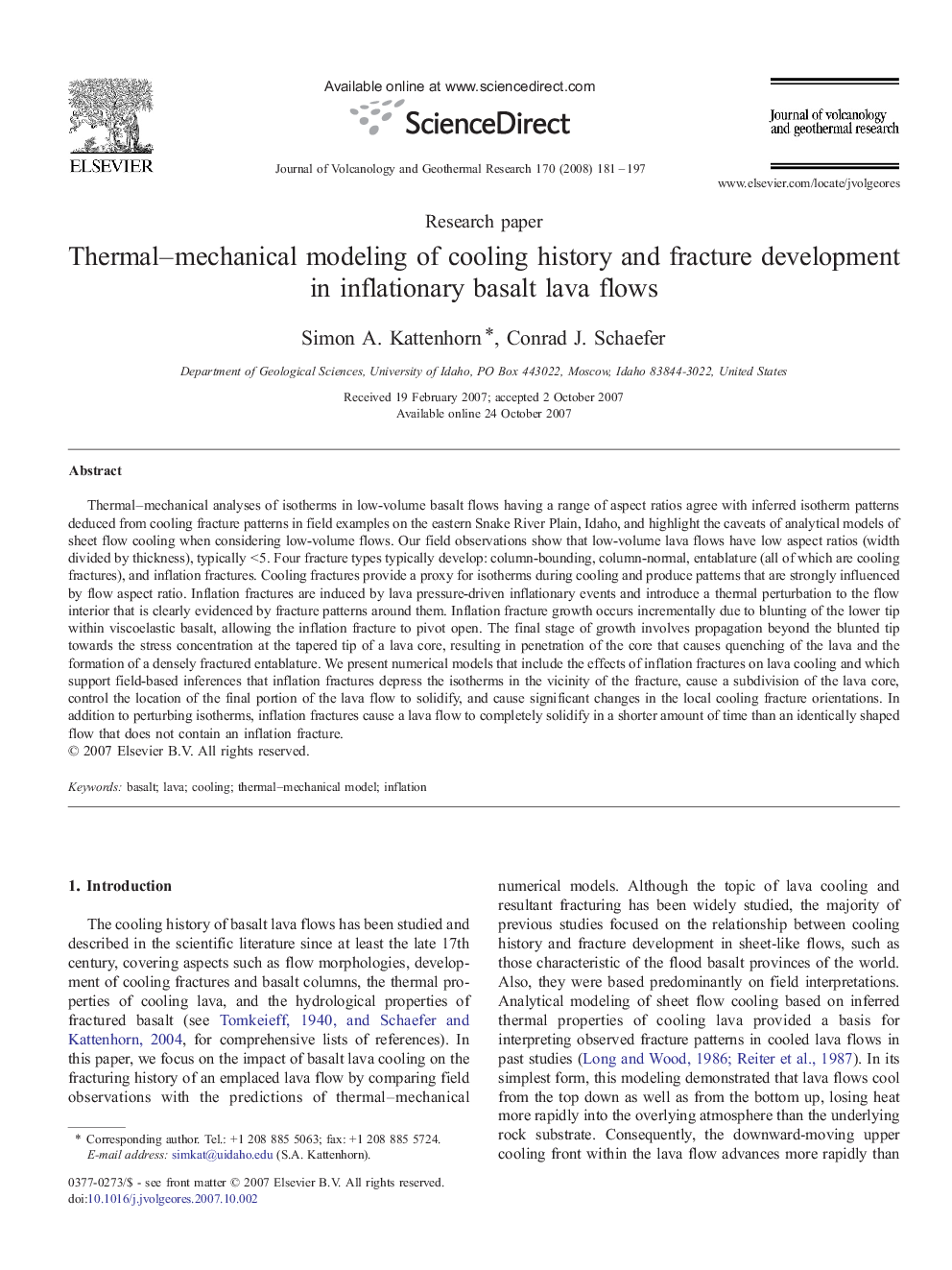| کد مقاله | کد نشریه | سال انتشار | مقاله انگلیسی | نسخه تمام متن |
|---|---|---|---|---|
| 4714749 | 1638453 | 2008 | 17 صفحه PDF | دانلود رایگان |

Thermal–mechanical analyses of isotherms in low-volume basalt flows having a range of aspect ratios agree with inferred isotherm patterns deduced from cooling fracture patterns in field examples on the eastern Snake River Plain, Idaho, and highlight the caveats of analytical models of sheet flow cooling when considering low-volume flows. Our field observations show that low-volume lava flows have low aspect ratios (width divided by thickness), typically < 5. Four fracture types typically develop: column-bounding, column-normal, entablature (all of which are cooling fractures), and inflation fractures. Cooling fractures provide a proxy for isotherms during cooling and produce patterns that are strongly influenced by flow aspect ratio. Inflation fractures are induced by lava pressure-driven inflationary events and introduce a thermal perturbation to the flow interior that is clearly evidenced by fracture patterns around them. Inflation fracture growth occurs incrementally due to blunting of the lower tip within viscoelastic basalt, allowing the inflation fracture to pivot open. The final stage of growth involves propagation beyond the blunted tip towards the stress concentration at the tapered tip of a lava core, resulting in penetration of the core that causes quenching of the lava and the formation of a densely fractured entablature. We present numerical models that include the effects of inflation fractures on lava cooling and which support field-based inferences that inflation fractures depress the isotherms in the vicinity of the fracture, cause a subdivision of the lava core, control the location of the final portion of the lava flow to solidify, and cause significant changes in the local cooling fracture orientations. In addition to perturbing isotherms, inflation fractures cause a lava flow to completely solidify in a shorter amount of time than an identically shaped flow that does not contain an inflation fracture.
Journal: Journal of Volcanology and Geothermal Research - Volume 170, Issues 3–4, 10 March 2008, Pages 181–197